_We may earn revenue from the products available on this page and participate in affiliate programs. Learn more ›
_
Best Value
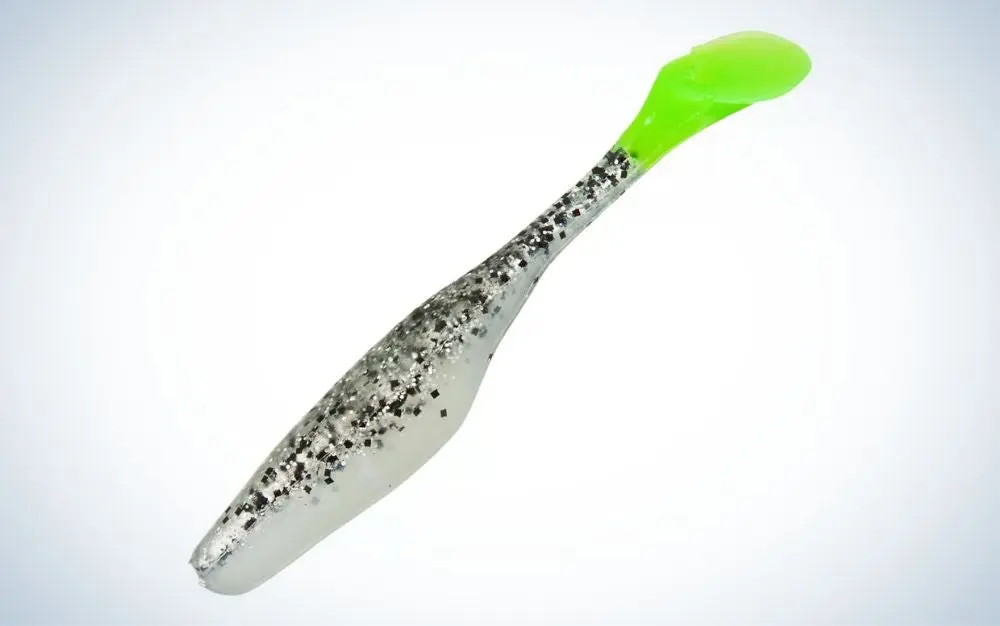
Bass Assassin Sea Shad Assassin
LEARN MORE
Summary
No matter where you target specks, it’s hard to beat a paddletail soft-plastic, and the Sea Shad emits a strong vibration that these fish can’t resist.
Best Topwater
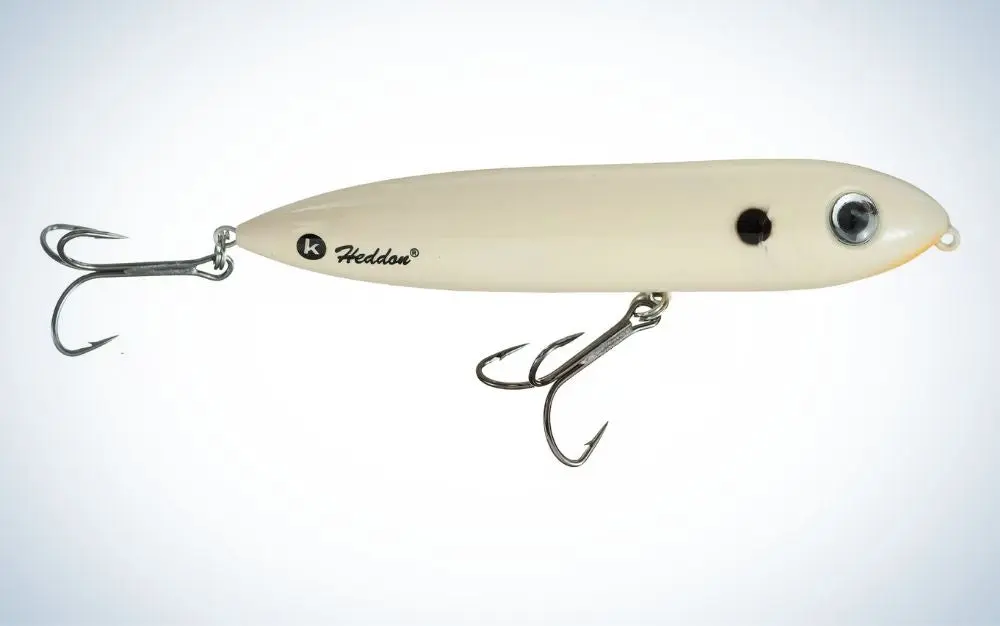
Heddon One Knocker Spook
LEARN MORE
Summary
The One Knocker is a modern cousin of the classic Zara Spook that emits a “clack” so loud it’ll call in seatrout from miles away.
Best For Winter
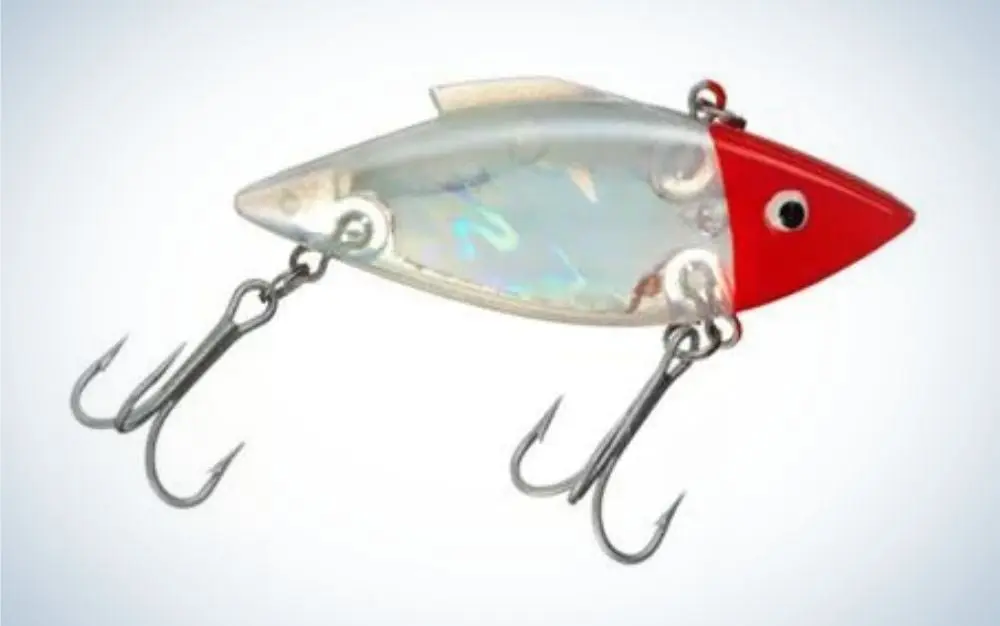
Bill Lewis Original Saltwater Rat-L-Trap
LEARN MORE
Summary
The Rat-L-Trap may have made its name in the freshwater scene, but when temperatures drop along the coast, this artificial is a speckled trout secret weapon.
Speckled trout lures can be used to catch seatrout as far north as Southern New Jersey and as far south as Northern Mexico. But the sweet spot for these popular gamefish is from the Carolinas, around Florida, and along the entire Gulf Coast to Texas. In the Southern states, “specks” provide year-round angling opportunity, and while fishermen get after them by boat, wade fishing is arguably the most popular method of targeting them. This makes seatrout accessible to anglers on any budget, as all you need is your own two legs (and a good pair of waders in the winter) to get into trophy trout. Not only are these fish voracious predators that put on a show when they smack a topwater lure, but they’re also one of the finest eating fish that swims in saltwater. No matter where you intend to get after them—or what time of year you intend to do it—here are some of the best speckled trout lures you can find.
Best Value: Bass Assassin Sea Shad Assassin
Best Topwater: Heddon One Knocker Spook
Best For Winter: Bill Lewis Original Saltwater Rat-L-Trap
Best Soft Plastic: D.O.A. Shrimp
Best in Texas: MirrOlure MirrOdine
Best in North Carolina: Johnson Silver Minnow Spoon
Things to Consider Before Buying Speckled Seatrout Lures
Before you hit the water in search of speckled seatrout consider where you are fishing, the time of year, and your rod and reel setup. These factors all contribute to your lure selection and overall success on the water.
Time of Year
Speckled trout can be caught well into the late fall in the Mid-Atlantic, and in the dead of winter along much of the Gulf Coast. But just because they’ll eat during the coldest months doesn’t mean they are as active as they are in spring and summer. With that in mind, your lure choice should be dictated first by the season. When the water is warmer, trout move a lot, covering vast expanses of flats and patrolling channel edges hunting for shrimp, crabs, and schools of baitfish. It’s not uncommon to see birds diving where trout are hammering a shoal of mullet, pilchards, or glass minnows. During these warmer times, you can fish more aggressively, opting for lures with heavy flash, that produce lots of vibration, and perform best at a higher retrieve rate. During the colder months, however, you’ll want to slow down. Cold-water trout
tend to group up in deeper holes and channels, and they don’t move around nearly as much. This is when you’ll want to lean on slow-falling spoons and soft-plastic baits that have action even with the slightest movement of the rod tip.
Rod & Reel
Speckled trout have notoriously soft mouths. Likewise, the lures that catch them most effectively tend to be small, as they’re mimicking the smaller forage these fish love. With that in mind, you want to chase these fish with a light spinning or baitcasting combo. A slower, softer rod action is favored by serious trout fishermen, as it helps keep lures planted in their mouth more effectively during the fight. A 10- or 15-pound braided mainline is more than adequate for specks, and its thin diameter will help small, light lures travel farther. These fish can be line shy, however, so make sure you add 3 or 4 feet of 10- to 12-pound fluorocarbon or monofilament leader to the end of your braid. Set your drag loose as well, because heavy pressure can increasingly widen the hole in a trout’s mouth as they dart and shake their heads, which can easily allow the hook to fall out.
Best Value: Bass Assassin Sea Shad Assassin
Best Value

Why it Made the Cut: No matter where you target specks, it’s hard to beat a paddletail soft-plastic, and the Sea Shad emits a strong vibration that these fish can’t resist.
Key Features
Strong thumping tail
Slim profile
Wide range of available colors
Pros
Simple to use
Affordable
Cons
Easily destroyed after a few bites
Speckled trout are adept at feeding in low light and murky conditions because they have a hyper-sensitive lateral line that picks up vibrations from a long distance. This is one of the reasons a paddletail shad is so effective, and the Sea Shad has been a trusted leader in the category for years. The beauty of this bait is its versatility in terms of rigging. Fishing a shallow flat loaded with grass? Pin one on a wide-gap hook weedless style and it’ll run clean all day. Working a hole in winter? Send one deep on a jighead and let it slowly bump along the bottom. Fishing a channel edge in July? Keep the jighead but suspend the bait below a popping cork and hang on. Regardless of water temperature, these baits are effective, as they can be burned during warmer times when the fish are active, and slow-crawled in the shoulder seasons when drawing a strike requires a bit more finesse.
Best Topwater: Heddon One Knocker Spook
Best Topwater

Why it Made the Cut: The One Knocker is a modern cousin of the classic Zara Spook that emits a “clack” so loud it’ll call in seatrout from miles away.
Key features
Cigar shaped body
Strong line-tie eye
Premium hooks
Pros
Casts a mile in windy conditions
Loud internal rattle
Cons
Takes some practice to master the proper retrieve.
The classic Zara Spook has been calling inshore saltwater species to the surface since 1939. It’s arguably one of the most effective redfish and speckled trout lures ever made, but that doesn’t mean this successor can’t teach an old Spook new tricks. The original Zara didn’t feature any internal rattles, but the One Knocker sports large steel bearings that smack against each other during the retrieve to produce a loud “clack.” Seatrout are triggered by sound, and this noise coupled with the classic walk-the-dog action makes this new-school spook positively lethal. By whipping the rod tip downward during the retrieve, the One Knocker will dart from side to side across the surface producing a gentle wake. This makes the lure extremely effective on those glassy mornings when the water looks like a mirror. Best of all, you can cast the One Knocker a mile, which means you can keep your distance while wading to avoid spooking these sound-sensitive fish.
Best For Winter: Bill Lewis Original Saltwater Rat-L-Trap
Best For Winter

Why it Made the Cut: The Rat-L-Trap may have made its name in the freshwater scene, but when temperatures drop along the coast, this artificial is a speckled trout secret weapon.
Key features
Baitfish profile
Loud internal rattles
Tough construction
Pros
Can be jigged or cast
Works at any depth
Cons
Collects grass and debris easily
Many anglers are familiar with the Rat-L-Trap, but most of them associate it with bass fishing. It’s a ringer on the lake, no doubt, but it’s also been an ace up the sleeve of seatrout hunters for decades. This is why Bill Lewis Lures produces a salt-specific model with high-end stainless hooks and hardware. Considering that seatrout hone in on prey using sound, it’s no wonder the Rat-L-Trap works so well—it’s one of the loudest lures ever made. Loaded with internal BBs, this bait makes so much racket you can hear it reverberating through the boat hull as you reel. While the Rat-L-Trap isn’t the best choice in summer when aquatic vegetation is thick, it’s a killer in the cold months, especially since it’s effective cast and reeled as well as jigged vertically. When trout hole up over dark mud bottom in winter, you can send down a “Trap” and keep it right in their faces with subtle lifts of the rod tip. Even the slightest movement gets the lure singing and even the most lock-jawed speck will open its mouth.
Best Soft Plastic: D.O.A. Shrimp
Best Soft Plastic
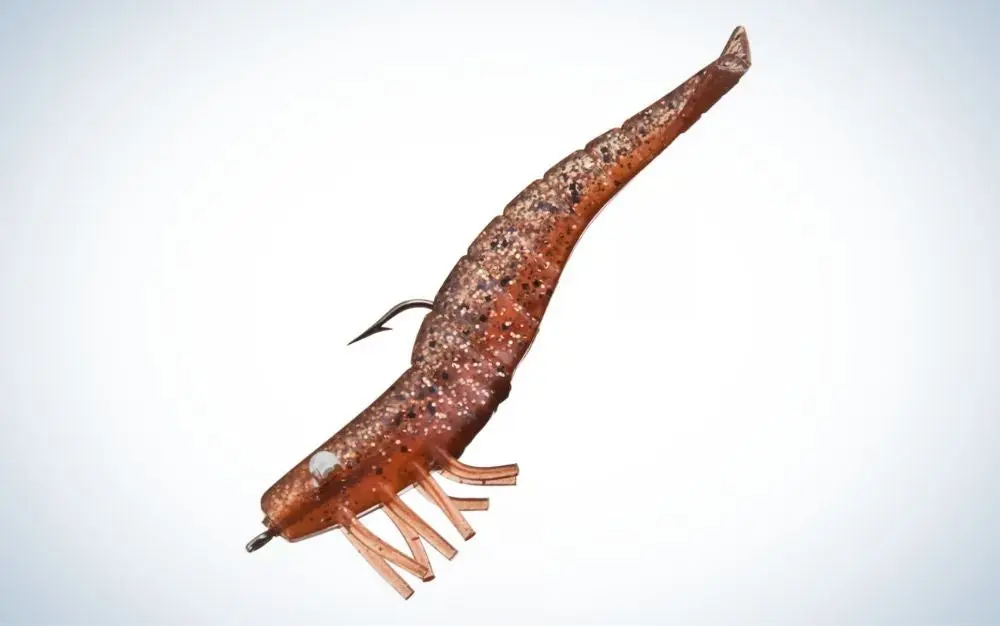
Why it Made the Cut: The D.O.A. is the most realistic shrimp imitation ever made, and there’s not a speckled trout from NC to TX that won’t hammer one.
Key features
Internal weight
Lifelike legs
Impregnated with real shrimp scent
Pros
Swims like a live shrimp
Consistent drop rate
Cons
Not great for distance casting
Created by renowned captain Mark Nichols in the 1990s, the D.O.A. Shrimp has held its place as the top-producing shrimp imitation ever since. There is no shortage of other soft-plastic shrimp on the market, but none of them have become more trusted. The D.O.A. is perfectly balanced, so it always sinks horizontally with the legs facing down. Those legs might not look too impressive dry, but underwater they flicker and undulate delicately just like the real thing, easily fooling even the wariest trophy seatrout. The D.O.A. fishes well by itself, but for sound-activated trout, it really shines under a popping cork. This is especially true in areas with ramped-up tidal flow. Cast a D.O.A. under a cork far up current and give it just a quick pop or two upon splashdown. The sound will get the attention of any trout in the area, and when they approach, they’ll see what they believe is a live shrimp gentle riding the flow and it’s game on.
Best in Texas: MirrOlure MirrOdine
Best in Texas
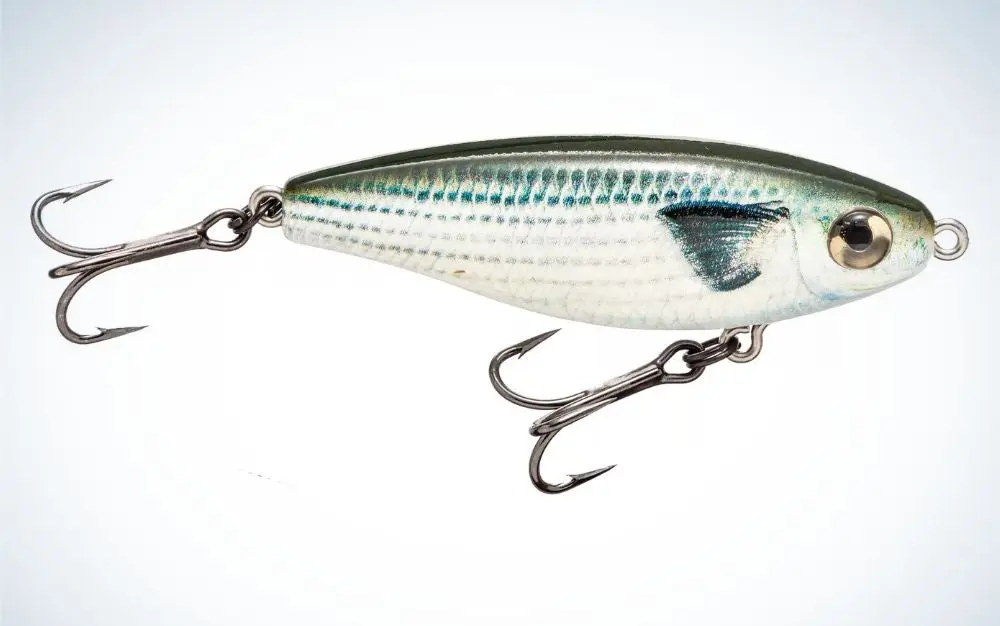
Why it Made the Cut: The MirrOdine makes a lot of noise and hovers in the place on the pause, making it a great finesse bait for finicky trout.
Key features
Deep body profile
Realistic patterns
Internal rattles
Pros
Suspends when paused
Works at any retrieve speed
Cons
Not ideal for areas with heavy grass or vegetation
I don’t believe I’ve ever met a speckled trout hunter from Galveston to Baffin Bay, Texas, that wasn’t well stocked with MirrOdines. While these hardbaits produce trout anywhere, they’re a staple on the Texas coast
because the high salinity levels of the bay system mean less vegetation than in other parts of the country. For the most part, trout are targeted over wide-open sand and mud flats, allowing a MirrOdine to do its thing and stay clean of debris. That “thing” is swim with a sharp side-to-side glide while internal rattles amp the sound to call in the trophies. The MirrOdine can be cast a great distance, so it’ll cover a lot of water. You can get it working just a few inches to a few feet below the surface, and when you pause, it’ll suspend in place. This suspension is what makes the lure so deadly, as you can work very slowly in the colder months, keeping it in the zone longer until a reluctant trout finally makes a move. In warmer water, work the rod tip more aggressively to get this bait slashing back and forth at a fast clip to draw violent reaction strikes.
Best in North Carolina: Johnson Silver Minnow Spoon
Best in North Carolina
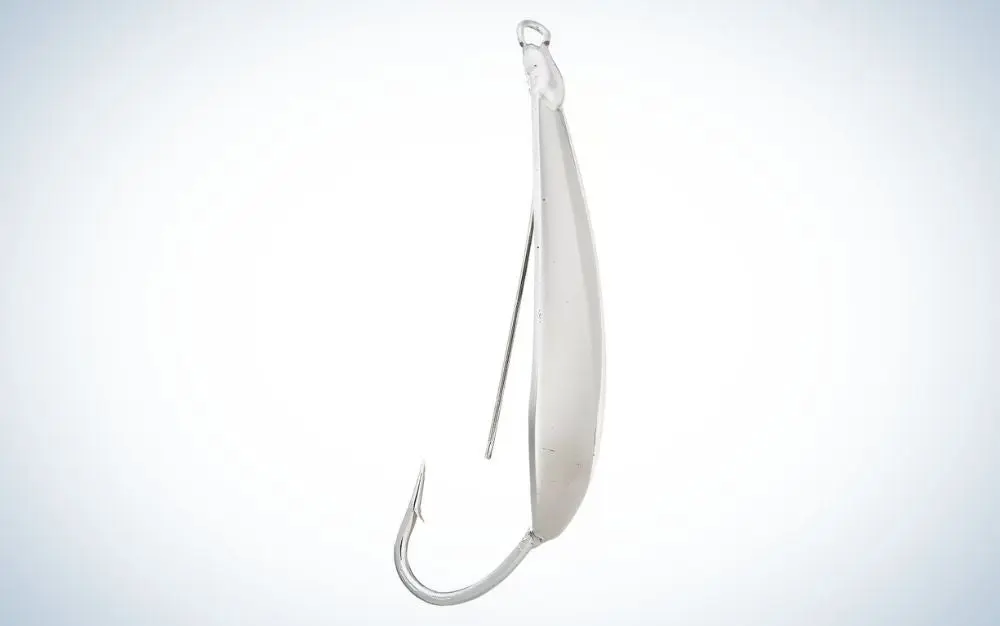
Why it Made the Cut: The Silver Minnow is a true classic that fools seatrout all year long thanks to its versatility, durability, and weedlessness.
Key features
Adjustable weed guard
Strong hook
Highly reflective
Pros
Offers the ability to add custom trailers
Produces in a wide range of water conditions
Cons
Lacks distance casting ability
A shiny metal spoon catches just about any predator fish that swims anywhere in the world, but if it’s specks you’re after, the Silver Minnow is the spoon you need. It’s lighter than similar spoons, giving it a slow wobble on the fall and helping it shine in shallow water because it doesn’t drop too fast. The weed guard can be adjusted up or down depending on how much vegetation is in the area. This is one feature that makes it ideal for North Carolina’s Pamlico and Albemarle Sounds, as the high volume of water moving through it with each tide tends to carry debris and vegetation. Silver Minnows also pair well with trailers, and in some cases, a trailer can really enhance their action. Soft-plastic curly-tail grubs in white or pink are common trailers, but don’t hesitate to experiment. Longer ribbon-tail worms in dark colors like purple and red also work well, or you can boost scent appeal by tipping a Silver Minnow with a squid or mullet strip. In the warmer months, don’t be afraid to burn this lure quickly just under the surface, even allowing it to occasionally jump out of the water. When the temperature starts to drop, slow your retrieve to get the spoon working in a wide wobble with a rhythmic thump. Pause every now and again to let the Minnow fall for a few beats, and don’t be surprised when it gets crushed by a trout.
How We Made Our Picks
I live in the Northeast, and while we don’t have speckled seatrout in the bays, we do have their cousins, the weakfish. I loved weakfishing so much that when I started to travel to fish, I couldn’t get after specks fast enough. I’ve spent many great days wading the flats of Florida, Mississippi, and Alabama for seatrout, but nothing compares to Baffin Bay in Texas. This is the trophy seatrout Mecca, and one of my favorite places to fish in the country. Many of the picks on this list were shown to me by some of the best seatrout guides and anglers in these regions. What I’ve learned from the pros are the key elements of a good trout lure, those being:
Sound: Seatrout feed by sounds, so whenever possible, you want a lure that knocks or rattles.
Vibration: Seatrout often live in murky or stained water, so lures that wobble or thump to ramp up vibration are most effective.
Subtlety: At certain times of year specks can be sluggish and require finesse, so it’s always good to have a few lures (like the Rat-L-Trap
) that make noise and has action when worked slowly or jigged in place.
FAQs
Q: What is the best bait to catch speckled trout?
There is no easy answer to this question, but the best answer would be whatever lure matches the predominant forage. Of course, the predominant forage will change with the season. If mullet are the prime menu item, a Spook-style topwater would be the best bet. If shrimp are running in the bay, switch to that DOA shrimp
.
Q: How do you rig a speckled trout lure?
There’s not much mystery in rigging any speckled trout lure, but they can be line shy and they do have teeth. With that in mind, you also want to use a fluorocarbon leader, just make sure it’s not too stiff. A 12- to 15-pound leader material is light enough to give your lures great action, strong enough to fight true trophy trout, but thin enough to disappear underwater and not spook the fish.
Q: What is the best time to catch speckled trout?
Generally speaking, during low light hours. Sunrise and sunset are prime, but seatrout are nocturnal and will feed all night.
Final Thoughts
There isn’t one perfect lure for all seatrout scenarios. Even if you’re fishing during warmer months and you’re eager to score them with topwater lures, a little cold front can send them deep. Always carry a wide variety of offerings to match changing conditions if you want to have maximum success with these shallow dwelling (and sometimes finicky) fish.






